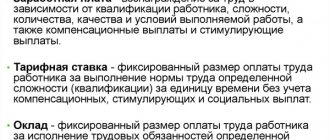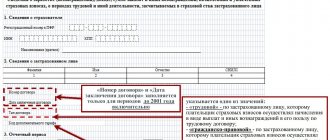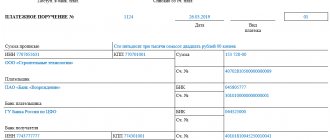Contents of legal acts
Federal regulations, and in particular Order 336 of the Ministry of Construction of the Russian Federation, regulate the procedure for implementing measures that should help preserve the life and health of citizens who work in the conditions of construction of new buildings and structures. The construction sector is considered particularly dangerous in terms of labor safety, as it has many factors that contribute to the occurrence of accidents at work. Safety standards in this area are adopted based on SNIP standards, safety requirements developed by the Ministry of Construction, documents on the implementation of earthworks and other activities that directly relate to the construction of new capital construction projects.
Typical Contents of a Construction Compliance Document
Such regulations must contain not only general standards regarding the implementation of safe and efficient work, which should help maintain the correct manner of construction, and help preserve the health and life of citizens providing such actions. Order 336n, in particular, contains an exhaustive list of instructions and standards regarding ensuring safe labor practices among workers of a construction company, in particular servicing construction machinery, equipment, working at a certain height and using equipment. Rules for occupational safety in construction are a necessary part of mandatory requirements for such actions, as they help to minimize or completely eliminate the negative consequences of this type of activity.
Occupational safety and health in construction and compliance with these requirements is an integral part of the employer’s responsibilities, which are also enshrined in federal legislation. POT in construction 336n in accordance with the specification of federal regulation provides not only control on the part of government agencies, but also on the part of the employer.
Important! Monitoring compliance with occupational safety rules in construction is carried out by state specialized labor protection bodies. In case of detection of violations in terms of support, standards, as well as changes in certain standards during the construction process, such bodies, in accordance with the same order of the Ministry of Labor 336n, must impose a certain punishment in the form of an administrative fine.
Basic elements of labor protection
Occupational safety is not a separate discipline, but a set of measures combined under one name aimed at maintaining the safety of workers during the work process.
Basic elements of labor protection:
- Issues of labor legislation regulated by the Labor Code of the Russian Federation. This document establishes the norms of relations between employees and management of organizations, rest and work regimes for all workers, basic working conditions for minors and women, personnel records management (hiring, transfers and dismissal of workers). In addition, the Labor Code stipulates the benefits provided by law and possible advantages in the work of certain categories of personnel.
- Safety precautions. This term unites all organizational and technical measures and means that are aimed at preventing exposure of service personnel to hazardous production factors, in other words, at preventing the occurrence of injuries at work or other deterioration in health.
- Fire safety. It consists of a set of measures aimed at improving the fire safety condition of all buildings and structures, as well as reducing the risk of fire during work processes.
- Sanitary and hygienic working conditions, which consist of creating a comfortable microclimate in the workplace and bringing all its parameters to normal, as well as ensuring adequate rest and living conditions on the territory of the enterprise.
https://youtu.be/jH45ZNQXzSA
About approval
Labor protection rules when working at height
Regulatory acts in this area imply the responsibility of heads of institutions to adopt their own regulations on labor protection. Such acts are adopted in the form of orders, regulations and instructions, which apply to all employees of institutions. In addition, such acts should not contradict federal standards and industry GOSTs regarding the construction of new structures.
Contents of equipment and rules of conduct when working at high-rise objects
PROFRISK.RF
Vasily CHUPROV Senior Lecturer, Chairman of the Certification Commission of the East Siberian Branch of the Federal State Budgetary Institution “Research Institute of TSS” of the Ministry of Labor of Russia, Advisor to the State Civil Service of the Russian Federation, 1st class (Irkutsk).
The article was published in the electronic journal “Handbook of Occupational Safety and Health Specialists” (No. 10, October 2015 ):https://e.otruda.ru/
Reasons for the emergence of new rules on labor protection in construction
The previously existing system of regulatory legal acts containing state regulatory requirements for labor protection was built on the Decree of the Government of the Russian Federation of May 23, 2000 No. 399. It included such regulatory acts as:
- safety rules, design and safe operation rules (129 in total);
- building codes and regulations, codes of practice for design and construction (28 in total);
- national (state) standards of the system of occupational safety standards (GOST R and GOST SSBT) (total - 554);
- related to industrial safety of hazardous production facilities and technical regulation.
The validity period of such by-laws was five years with a possible extension no more than 2 times in a row. However, such renewal, state registration and official publication, as a rule, were not carried out. Therefore, the regulatory legal framework of that time in the field of labor protection:
- did not comply with current labor legislation;
- did not comply with Decree of the President of the Russian Federation of May 23, 1996 No. 763;
- was not binding on employers;
- was advisory in nature, and its provisions were applied only through local acts of the employer.
Regulatory acts that are not registered with the Ministry of Justice of Russia or are registered but not published do not entail legal consequences as they have not entered into force. That is, they cannot serve as a basis for regulating legal relations or applying sanctions to citizens, officials and organizations for failure to comply with their requirements. They cannot be relied upon when resolving disputes. This is confirmed by law enforcement, supervisory and judicial practice.
The first step to eliminate existing gaps was the adoption of Decree of the Government of the Russian Federation of December 27, 2010 No. 1160 “On approval of the regulations on the development, approval and amendment of regulatory legal acts containing state regulatory requirements for labor protection.” It delimited the spheres of influence of the federal laws “On Technical Regulation”, “Industrial Safety” and the Labor Legislation of Russia in the field of labor protection and brought it into compliance with the current legislation of Russia.
Now the regulatory legal acts containing state regulatory requirements for labor protection include:
- occupational safety standards;
- rules and standard instructions on labor protection;
- state sanitary and epidemiological rules and regulations.
By this resolution, building norms and rules, codes of practice for design and construction are removed from the scope of legislation on labor protection and transferred to the scope of legislation on technical regulation. The exception is regulations establishing labor safety requirements in construction.
Also, all safety rules, rules of design and safe operation approved by Gosgortekhnadzor, Gosatomnadzor, Rostekhnadzor, Gosstroy, Rostekhregulirovanie came under the jurisdiction of the legislation on industrial safety.
Next, a lot of work was done to transform labor safety rules, especially at hazardous facilities, into the category of mandatory ones, as required by Article 211 of the Labor Code.
Among them:
- Rules for labor protection when working at height, approved by order of the Ministry of Labor of Russia dated March 28, 2014 No. 155n (registered with the Ministry of Justice of Russia on September 5, 2014 Registration number No. 33990. Published in Rossiyskaya Gazeta No. 251 dated November 5, 2014. );
- Rules for labor protection during the operation of electrical installations, approved by order of the Ministry of Labor of Russia dated July 24, 2013 No. 328n (registered with the Ministry of Justice of Russia on December 12, 2013 Registration number No. 30593);
- Rules for labor protection during loading and unloading operations and placement of cargo, approved by order of the Ministry of Labor of Russia dated September 17, 2014 No. 642n (registered with the Ministry of Justice of Russia on November 5, 2014 Registration number No. 34558), etc. Their provisions are also reflected in new rules on labor protection in construction.
The rules for labor protection in construction (hereinafter referred to as the Rules) were approved by order of the Ministry of Labor of Russia dated June 1, 2020 No. 336n and registered with the Ministry of Justice of Russia on August 13, 2020. They were assigned registration number No. 38511.
They establish state regulatory requirements for labor protection in the process of general construction and special construction work carried out during new construction, expansion, reconstruction, technical re-equipment, current and major repairs of buildings and structures (hereinafter referred to as construction production), consist of 73 pages, 502 paragraphs.
Positive aspects of the new rules
Construction safety regulations have several positive aspects.
With the release of the new Rules, a single regulatory legal document on labor protection in construction appeared to replace the numerous SNiPs, SPs, GOSTs, POT RM, PB, etc. It established uniform requirements for labor protection in the construction industry. The rules received the status of state regulatory requirements for labor protection. This means that many discrepancies and conflicts of previously adopted numerous SNiPs and joint ventures have been eliminated.
The new Rules reflect all the latest legislative and regulatory changes in labor protection related to construction, including in the field of technical regulation and industrial safety of hazardous production facilities.
The new document is less regulated, more specific and written in accessible language. It has more references to current labor protection rules in various areas that intersect with construction, as well as regulatory requirements in the field of technical regulation and industrial safety of hazardous production facilities. It has reduced the number of references to regulatory acts on labor protection in construction of a recommendatory nature (state standards of the system of labor safety standards, GOSTs, Industrial Labor Regulations of the Republic of Moldova, Industrial Safety Regulations, etc.).
The outdated regulatory and legal framework in the field of labor protection is practically excluded from the Rules. They no longer regulate the relationships between customers, contractors, subcontractors, and tenants.
The text of the document has become much easier to navigate. This is evidenced even by the numbering of points, which is in ascending order (1-502). In SNiP, for example, it is more complicated (4.1.1-9.4.11, etc.).
About the rights and obligations of the employer
The employer is obliged to provide measures that prevent and reduce the impact on employees of harmful and (or) hazardous production factors associated with the nature of the work performed. The Rules contain a list of these factors.
To ensure work safety in harmful and dangerous conditions, the employer must also introduce labor protection requirements into:
- construction organization project (CWO);
- work execution project (WPP).
And then fulfill these requirements. This procedure is established by the new Rules.
The employer has the right to establish additional labor safety requirements during the construction process that improve the working conditions of employees.
The priority of the Rules is to preserve the life and health of working people, identify and eliminate, minimize occupational risks or use effective means of individual and collective protection. These areas are implemented through local regulations of the employer. Therefore, he has more opportunities to ensure the safety of workers during construction work.
There is no need to issue unnecessary regulations
The employer no longer needs to unnecessarily regulate such local regulations as:
- standards of enterprises (organizations) for occupational safety, developed on the basis of recommendations of the State Committee for Construction of Russia;
- instructions on labor protection for employees of organizations, developed on the basis of standard industry instructions on labor protection for construction workers.
The Rules no longer mention the order:
- formation of commissions (committees) on labor protection and labor protection services;
- introduction of labor protection commissioners;
- preparation of documentation for a special assessment of working conditions;
- investigation of industrial accidents;
- organizing labor safety corners.
All of the above is regulated by the Labor Code.
Disadvantages and contradictions of the new document
In addition to the positive aspects, the new document also has disadvantages. They are expressed in some contradictions.
Thus, paragraphs 267 and 289 of the Rules regulate the use of a safety belt, while by order of Rostekhregulirovaniya this type of personal protective equipment has been abolished. Moreover, paragraph 104 of the Labor Safety Rules when working at height prohibits the use of strapless safety belts due to the risk of injury or death due to the impact on the worker’s spine when stopping a fall or the worker falling out of the safety belt.
Responsibility for violation of the Rules on labor protection in construction
For violations of the Labor Safety Rules in Construction, Part 1 of Article 5.27.1 of the Code of Administrative Offenses is applied. This provision provides for punishment in the form of a warning or a fine for the head of the organization and entrepreneurs in the amount of 2,000 to 5,000 rubles. The organization may be fined from 50,000 to 80,000 rubles.
For repeated violation of the rules, Part 5 of Article 5.27.1 of the Code of Administrative Offenses is applied. It provides for punishment for the head of an organization in the form of a fine in the amount of 30,000 to 40,000 rubles or disqualification for a period of one to three years. The entrepreneur will be punished with a fine of 30,000 to 40,000 rubles or his activities will be suspended for up to 90 days. And the organization will be fined from 100,000 to 200,000 rubles or have its activities suspended for up to 90 days.
Steps an employer needs to take in connection with the new rules
In connection with the emergence of new rules, employers, regardless of their organizational and legal form, during construction proceedings must:
- Bring local regulations (orders, regulations, orders, procedures, rules, regulations, programs, etc.) relating to labor protection in construction into compliance with the requirements of the Rules.
- Review labor safety instructions for everyone working on construction work and job descriptions for officials organizing construction production, including engineering and technical workers, taking into account the requirements of the new Rules.
- Conduct unscheduled briefings with all workers involved in construction, without exception, including organizers and managers of construction production.
- Conduct an extraordinary examination of the knowledge of labor protection of all employees of organizations engaged in construction work, without exception, regardless of the date of the previous examination. In this case, knowledge of only these legislative and regulatory legal acts should be tested.
In the photo of the Institute of Labor: labor safety regulations in US construction
Compared to the weighty rules for labor safety in construction in the United States, our Rules are more like a short reminder for construction workers... (photo by the Labor Institute)
https://youtu.be/fPGPk6reJFg
Video lecture by the author of the article – Vasily Chuprov
see all our videos on labor legislation (HR, labor protection, personnel records and personnel management) on the professional channel of the Institute of Labor. The best professional videos in the social and labor sphere! All videos are processed and provided with captions, comments and explanations for distance learning purposes . See for yourself: https://www.youtube.com/c/Institute of Labor
Applications for distance learning are accepted by email. by mail or on the website of the VSF Research Institute of TSS of the Ministry of Labor of Russia: online application
Rules for labor protection in construction when working at height
Rules for labor protection in road transport
When carrying out work and other activities on high-rise structures, in addition to Order 336n, internal regulations regarding safety must be followed. Workers must use all established safety equipment, primary protective equipment, insurance, and also undergo special training from occupational safety specialists.
Rules for handling specialized tools during construction activities
Excavation
Intersectoral Occupational Safety and Health Regulations (IPREE)
Excavation work also requires the presence of certain standards in terms of ensuring control. Such actions also include a set of necessary protective equipment, training and marking in a special logbook. In addition, workers are equipped with safety equipment in the event of a threat in the form of electrical cables, fire hazards, failures or other mechanical damage.
Responsibility of the employer and workers for violation
The state provides for strict liability in terms of ensuring safe working conditions for workers. In case of detection of violations, criminal, administrative, civil or disciplinary liability is provided. Only government organizations that are engaged in control and supervision in the current area are vested with the right to issue government orders.
Note! Such bodies identify violators and issue appropriate orders, and the degree of responsibility is characterized by the presence of certain consequences when certain circumstances occur in the form of emergency incidents or industrial accidents.
Sanitary standards for the construction industry
Industrial sanitation and occupational hygiene takes into account all significant points for operators and workplaces. Over time, they have a serious impact on productivity and health.
- Operator's body position when working.
- Workwear.
- Respiratory and eye protection.
- Treatment of wounds and cuts.
- Technical characteristics of the instruments and their contents.
Poor operator posture during routine tasks can lead to accidents due to increased fatigue and distraction. Therefore, all work must be specified in the instructions.
In the construction industry, you often have to work with aggressive and dangerous substances, in very dusty rooms - for this purpose protective measures are provided in the form of respirators, gloves, safety glasses, and rubber boots. Special clothing is also required. It should not be rough, narrow or uncomfortable, as this will increase the risk of infection or burns.
Regulatory documents on labor protection in construction
As part of its direct activities, each organization is obliged to issue relevant local regulations, which not only contain direct references to federal laws and orders, but also include clarifications regarding the specifics of its own activities. Such instructions and standards are mandatory in nature and apply to all employees of the enterprise, both during certain work and during other periods of activity.
Techniques for behavior in case of fire or fire when carrying out construction activities at a specific facility
Potential construction risks
The term “construction” refers to a set of works carried out in relation to existing objects, planned, or in the process of construction. It includes several areas:
Construction Project Stages
- research;
- design;
- approval and obtaining permits;
- solving organizational issues;
- construction and installation works;
- commissioning.
Each field of activity has its own risks and can lead to occupational diseases among operators, minor injuries and acute injuries, even cases incompatible with life. Risks are associated with operators working in adverse conditions, with heavy equipment, complex mechanisms and exceeding permissible physical loads.
Risk factors are classified according to the method of injury:
- moving parts of units and mechanisms;
- work of heavy equipment operators in conditions of limited visibility;
- lifting loads and the possibility of them falling from a height;
- high-altitude work;
- high gas or dust levels in the air;
- operator work with electrical appliances, increased voltage in networks, open laying of cables and their damage;
- poisoning when working with toxic and dangerous substances;
- abnormal physical activity;
- nervous and psychological stress.
Order 336n
The regulatory act of the Ministry of Construction regulating safety rules in construction is a special order that must be followed by all managers of specialized enterprises involved in the construction of such buildings. POT 336n establishes standards and rules of conduct in this area, as well as requirements for enterprises in this area, quality standards in the use of protective equipment, the year of use of such items, changes in protection parameters depending on working conditions. The status of such a document establishes the mandatory implementation of norms by all institutions involved.
General requirements regarding ensuring the neutralization of harm to the health of workers during the construction of structures
As a result, the rules for labor protection in construction must be observed by all members of legal relations in their entirety, since state regulation in this area is associated with significant penalties in terms of administrative fines or other types of liability.
Creating safe working conditions in production
By definition, management should be considered as the implementation of a set of organizational measures aimed at achieving the necessary quantitative and qualitative results, as well as preventing the labor of workers.
To solve labor safety problems, a system of measures was developed based on generalizing the experience of leading construction organizations in Russia.
Responsibility for the state of labor protection in all departments is assigned to the head of the organization: manager (trust), chief (SMU); Direct management of the safety service is carried out by the technical director (chief engineer) through the safety engineer and the departments subordinate to him: production and technical (PTO), labor and wages (HTP), chief mechanic (OGM), energy, etc. In higher decision-making bodies (headquarters, ministries) the structure of responsibility for the state of labor protection is similar.
In construction departments, where the level of production organization is higher, there are fewer violations of labor protection requirements. Therefore, the main way to increase the level of occupational safety should be considered to be an increase in the general level of production culture.
The highest indicators in the field of labor protection are found in enterprises where workers are systematically trained in advanced safe work methods, various briefings are carried out, safety requirements when working with power tools are studied, features of the operation of construction machines and mechanisms, etc.
In the prevention of industrial injuries, operational safety management and daily targeted activities to prevent the occurrence of dangerous situations are very effective. Such activities are especially relevant at large construction sites and reconstructed facilities, where several general construction and specialized organizations operate simultaneously and a large number of machines, equipment, and workers are concentrated. In such conditions, it is mandatory to create special safety headquarters under the general leadership of a representative of the general contractor for coordination.
The main task of operational control over labor safety is the timely detection of violations of the norms and rules of safe labor organization and the adoption of prompt measures to eliminate them.
Due to the particular importance of preventive work on labor protection directly at workplaces, the duties and responsibilities of engineering and safety engineers in construction departments are regulated. Let's consider the responsibilities of officials to comply with labor protection rules.
Master (foreman):
is responsible for ensuring labor discipline and safe working conditions, carrying out measures to reduce and prevent industrial injuries and occupational morbidity at the site or facility he manages;
every shift, together with the public labor safety inspector, carries out the first stage of operational control;
ensures safe construction and installation work and sufficient illumination of workplaces;
controls the use and correct use of work clothing and other personal protective equipment by workers, compliance with the rules for carrying heavy loads, provision of workplaces with warning notices and safety signs;
holds scheduled meetings with workers, at which he examines all cases of violations of safety regulations;
conducts initial, periodic, unscheduled safety briefings for workers.
Senior foreman (head of section):
is responsible for ensuring discipline and safe working conditions, carrying out measures to reduce and prevent industrial injuries and illnesses at the site, the state of visual propaganda at the site;
together with the public labor safety inspector, carries out the second stage of operational control;
issues permits for the right to carry out work in existing workshops, on construction sites of other construction organizations, near existing communications;
once every ten days, together with the person responsible for the good condition of lifting machines, checks the condition of the rail tracks, the correct storage of products and compliance with the established dimensions, the presence and serviceability of removable lifting devices and containers;
holds Occupational Safety Day once a month;
personally investigates every accident that occurs at work;
organizes training of workers in safe work practices, instructs foremen and other engineering and technical personnel of the site.
Safety Engineer:
ensures the organization of all work in the field of labor protection and controls the implementation of all measures aimed at eliminating industrial injuries, illnesses and improving production standards;
exercises control over compliance by administrative and officials with orders, instructions and other regulations in the field of labor protection, as well as established testing periods for personal protective equipment, machines and other devices subject to periodic or one-time testing;
keeps records of accidents at sites, workshops and other departments, analyzes the causes of industrial injuries;
participates in the investigation of the causes of accidents and incidents at sites, in the development of measures to prevent them;
conducts introductory safety training for workers and monitors the timely conduct of safety training directly at the workplace;
develops an annual work plan for the labor protection service.
Responsibility of officials for violation of labor protection rules. Persons who violate labor laws and rules governing the safety of work are subject to disciplinary liability. Depending on the severity of the offense, the following types of penalties are imposed: reprimand, reprimand, transfer to a lower-paid job for up to 3 months, dismissal.
Persons who have committed malicious violations provided for by the Criminal Code of the Russian Federation, violating safety regulations and the collective agreement may be brought to criminal liability. Unlike criminal liability, administrative liability consists of the imposition of a fine (but no later than 1 month from the day the offense was committed). The amount of the fine is determined depending on the severity of the offense.
Financial liability consists of compensation for damage caused to an organization or person, and is regulated by the Civil Code of the Russian Federation. Administrative and technical personnel are responsible for negligence in their duties even if there were no violations of specific safety rules, but through their actions or inactions the official contributed to the increase in industrial injuries or the reasons that led to a specific accident.
Comprehensive plan for improving labor protection conditions and sanitary measures
Construction organizations carry out work to create healthy and safe working conditions in accordance with the developed annual comprehensive plans for improving labor protection conditions and sanitary measures.
A typical plan includes the following main activities:
bringing the condition of buildings, structures and equipment into compliance with standards;
certification of the sanitary and technical condition of working and living conditions at production sites and operating equipment;
normalization of sanitary and hygienic working conditions;
systematic reduction in the number of workers (primarily women) engaged in heavy physical labor and hazardous industries, on night shifts;
compliance of sanitary premises and devices with current standards and rules;
implementation of a set of measures to strengthen labor and production discipline, etc.
In the complex of measures to certify safe equipment and safe production, one of the main directions is the system of occupational safety standards (OSHS) for manufactured products and applied production processes. This is the main regulatory and technical basis for labor protection; it establishes five classification groups of standards:
general provisions that establish the structure, terminology in the field of labor safety, organization of training and instruction for workers on safe labor methods and other organizational and methodological provisions;
general requirements and standards for types of hazardous and harmful production factors, establishing maximum permissible values of standardized parameters;
general safety requirements for equipment;
general requirements for safe production processes;
requirements for protective equipment for workers, including the protective, operational and hygienic indicators of collective and individual protective equipment.
Collective protection means include measures and improvements that all people working on a site or in a given construction organization depend on. These improvements relate to the operation of mechanisms, harmful production emissions, vibration, noise, etc. For example, collective protection means include fencing devices, automatic control and alarms, equipment and devices for disinfection, devices for ventilation and air purification, radiation monitoring machines, dust collectors, etc.
If the safety of work cannot be ensured by the design of the equipment, the organization of production processes, architectural and planning solutions and means of collective protection, then personal protective equipment is used to protect the worker individually from the influence of harmful environmental factors. Workers who do not have appropriate personal protective equipment may not be allowed to work. Figure 1 shows common personal protective equipment.
Fig.1. Personal protective equipment and workwear
a — protective helmet with a waterproof cape; b — helmet with a folding transparent shield; c — electric welder’s shield; g — — open safety glasses; d — universal respirator; e - safety belt; g - protective jacket with a hood; h - protective suit; and - non-slip shoes
White helmets are produced for management personnel and inspectors, red for engineers, yellow and orange for workers and junior service personnel. In other countries, colored helmets may have different meanings. Thus, in many Western European countries, assembly workers wear white helmets; in the USA, assembly workers wear blue helmets, etc.
Safety glasses can be clear for dust protection or with light filters for welding. Gas masks and respirators can be universal or neutralize only the harmful effects of individual gases. The simplest types of respirators are gauze bandages made of 5...6 layers of gauze. Safety belts are designed to hold a falling load weighing 100 kg. Due to their protective properties, overalls can be of general purpose or for special work. Working shoes (boots, shoes, etc.), depending on the working conditions, can be leather, rubber or felted.
In addition to the listed personal protective equipment, rubber gloves are used for working with power tools, canvas mittens for loading and unloading operations, sheepskin coats and felt boots for working in winter, overalls, aprons, vests and oversleeves for welding work and other personal equipment.








